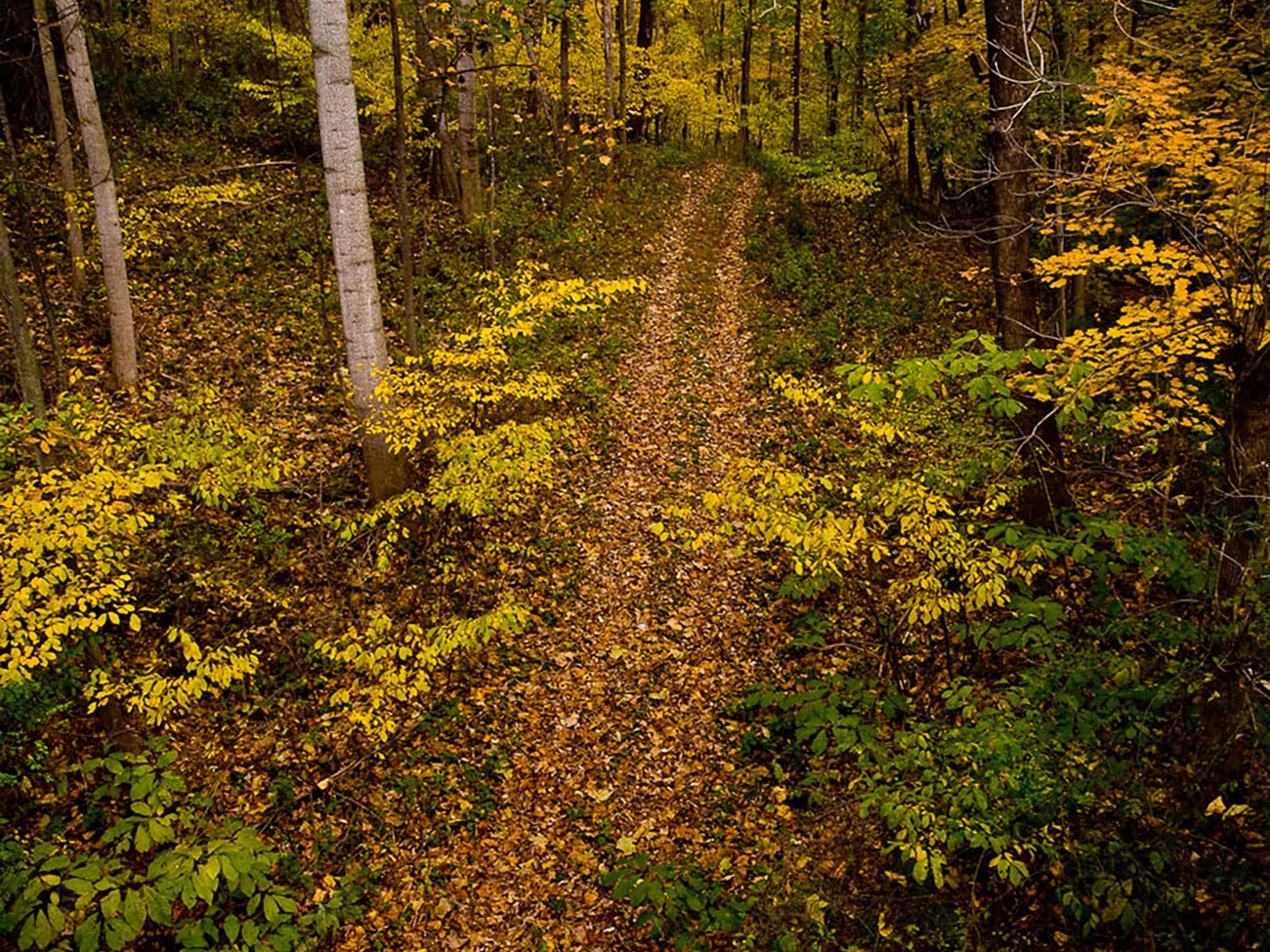
NPS/Thomas Paradis
Overview
The National Parks of the National Capital Region (NCR) are a fascinating collection of natural areas that fall within the immense Eastern Deciduous Forest ecosystem. (The NCR includes northern Virginia, the West Virginia panhandle, the District of Columbia, and inland Maryland.)
North America's Eastern Deciduous Forest ecosystem stretches over 26 states from Florida up to New England and southern Canada and it extends as far west as Texas and Minnesota. These forests are dominated by broad-leafed trees that shed their leaves annually (deciduous), with evergreen cone-bearing seed trees (conifers) such as pines and hemlocks common in some areas.
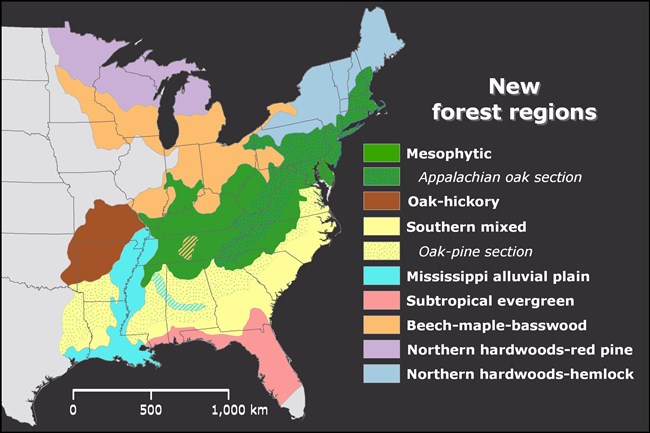
Dyer 2006
The Eastern Deciduous Forest (Dyer 2006) once occupied about 2,560,000 km2 (Delcourt and Delcourt 2000). For thousands of years it was dominated by oaks, chestnuts, and hickories that provided valuable food and shelter for wildlife. A mosaic of grasslands, including savannas with scattered trees, was dispersed throughout the Eastern Deciduous Forest’s southeastern bands of subtropical evergreen and southern mixed forest types. The 1700s and 1800s brought unprecedented changes as forest was cleared for agriculture, timber, fuelwood, and urban expansion.
Despite these and many other challenges, parts of the Eastern Deciduous Forest in the southern and Mid-Atlantic U.S. are recognized as high priorities for worldwide conservation. Two parts of the Eastern Deciduous Forest in the NCR, the Southern Coniferous and Broadleaf Forests and the Appalachian and Mixed Mesophytic Forests, were chosen as part of the "Global 200" list of areas important for global conservation. These areas were selected for recognition for their high biodiversity and their large area compared to similar forests worldwide.

NASA Earth Observatory
Climate
The Eastern Deciduous Forest is a type of "temperate deciduous forest." These forests occur across the world in the mid-latitudes (between the tropics and the polar regions) in western Europe, eastern Asia, southwestern South America, and the eastern U.S. They are distinguished by warm and cold air masses that cause four distinct seasons a year. Trees change color and lose their leaves in fall as temperatures and precipitation levels drop. Winters have low precipitation levels and cold temperatures, and trees and other plants are inactive. In spring, temperature and precipitation levels rise causing plants to break dormancy and new growth and flowering to burst forth. In summer, plants of temperate deciduous forests grow the most, fueled by the warmest temperatures and highest precipitation levels of the entire year. However, in the last 50 years, the NCR has had higher annual temperatures and changes in the seasonality of precipitation.
Geology and Topography
The vast majority of NCR lies within the watershed of the Potomac River. The Potomac is the second-largest tributary of the Chesapeake Bay—America's largest estuary. The parks of the NCR have a diverse array of natural forest communities determined in part by a wide range of underlying soils, geology, and topography. In the eastern U.S., these communities typically occur within north-south bands parallel to the Atlantic coast and the Appalachian Mountains called physiographic provinces.
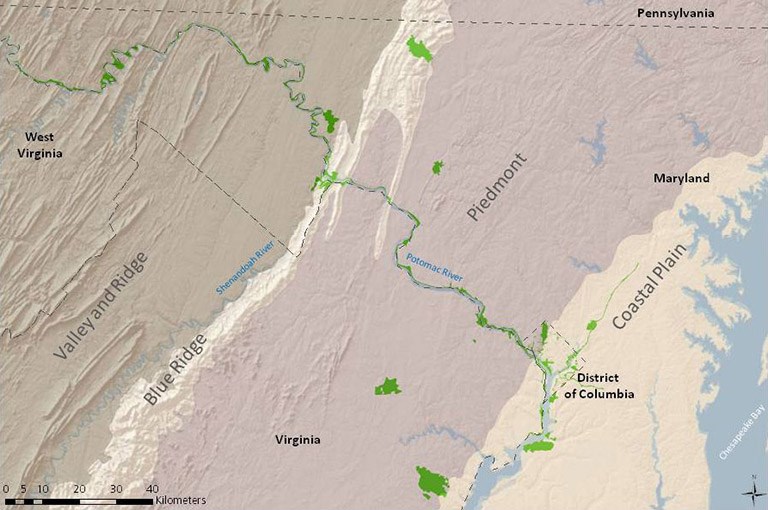
NPS
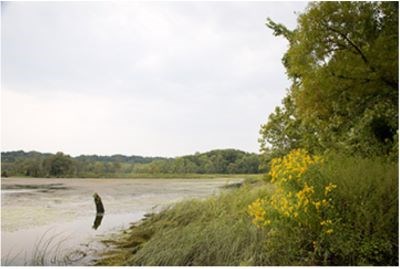
NPS/Thomas Paradis
Coastal Plain
The easternmost portion of the NCR, the Coastal Plain is the mostly flat and low-lying area between the Atlantic Ocean and the foothills of the Appalachian Mountains. It is made from layers of sediment primarily eroded from the Appalachian Mountains and deposited by rivers as sediment over the Coastal Plain.
The parks that make up National Capital Parks - East, parts of the George Washington Memorial Parkway, and a portion of Prince William Forest Park all fall within the Coastal Plain.
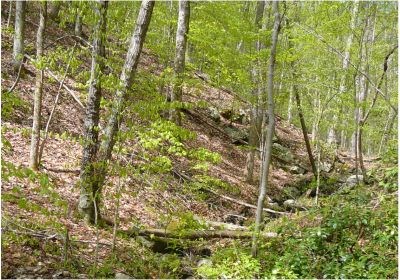
NPS
Piedmont
The Piedmont occupies the Appalachian foothills west of the Coastal Plain. The rock underlying the surface, or bedrock, changes from softer, mostly sedimentary rock in the east to harder, mostly metamorphic rock in the west. This transition occurs in a zone called the "Fall Line." It gets this name as it is marked by a series of waterfalls and rapids as water moves from higher elevation in the Piedmont to lower elevation in the Coastal Plain in the Potomac Gorge at Great Falls Park (Virginia) or C&O Canal National Historic Park (in Maryland).
The NCR's Prince William Forest Park is the largest National Park in the Piedmont region. Other parks within the Piedmont include George Washington Memorial Parkway, C&O Canal National Historical Park, Manassas National Battlefield Park, Monocacy National Battlefield, Rock Creek Park, and Wolf Trap National Park for the Performing Arts.
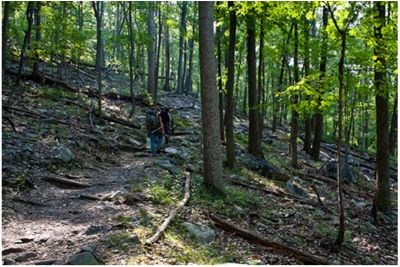
NPS/Thomas Paradis
Blue Ridge
To the west of the Piedmont is the narrow Blue Ridge region. It encompasses the Blue Ridge Mountains, the easternmost part of the Appalachians. Its rocks are the oldest in the National Capital Region. They formed over millions of years as an ancient ocean floor was folded, smashed, and pushed up into the Appalachian Mountains, which at the time soared to heights resembling the modern Himalayan range. Erosion during the following 265 million years cut down the once towering mountains to their modern elevations, and exposed rocks that were once buried deep within the core of the mountain belt. The Blue Ridge is typified by steep terrain covered by thin, shallow soils.
NCR parks in the Blue Ridge include Catoctin Mountain Park, Harpers Ferry National Historical Park, and a small section of the C&O Canal National Historical Park.
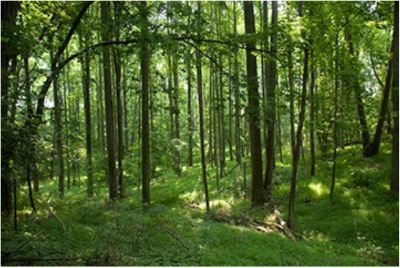
NPS
Ridge and Valley
The westernmost physiographic region in the NCR is the Ridge and Valley, which makes up part of the Appalachian Mountains. Its parallel ridges are made of rocks that are more resistant to erosion than those of the valleys. Therefore, the ridges remained as high points on the landscape, while the valleys were eroded into gently sloping lows. Areas with carbonate bedrock formations (e.g. limestone) have "karst" topography that can include sinkholes, underground streams, and caves.
All of Antietam National Battlefield, parts of Harpers Ferry National Historical Park, and much of the C&O Canal National Historical Park are within the Ridge and Valley.
Forest Characteristics and Species
The Eastern Deciduous Forest canopy is dominated by oaks (Quercus), hickories (Carya), tulip poplar (Liriodendron tulipifera), American beech (Fagus grandifolia), "hard maples" (Acer spp.), and basswood (Tilia). Important conifers are eastern hemlock (Tsuga canadensis) and eastern white pine (Pinus strobus). All of these are species are common in the NCR except for eastern white pine and eastern hemlock, which is in pest- and disease-related decline. A majority of the ash trees (Fraxinus) in the region have died since 2014 from the devastating effect of the emerald ash borer. American chestnut (Castanea dentata), formerly dominant throughout the Eastern Deciduous Forest, was virtually eliminated by disease in the early twentieth century.
Based on the four geologic and topographic areas described above, forests in each NCR park have somewhat different types of forest and tree species. For example, American holly (Ilex opaca) is common on the Coastal Plain and Piedmont, but largely absent from the more western Blue Ridge and the Ridge and Valley. Chestnut oak (Quercus prinus) is found in many NCR parks, but is most common in Catoctin Mountain Park and Harpers Ferry National Historical Park, in the Blue Ridge.
NCR forests are also home to a diverse assortment of animals and fungi. These organisms not only rely on forests for survival, but also play a key role in maintaining the forests through seed dispersal, disturbance, soil turnover, and nutrient cycling. The NCR Network’s Inventory and Monitoring (NCRN I&M) program monitors some of these animals, like birds and amphibians, to assess population changes and forest dynamics.
It is also possible to look at forests at an even finer scale of "natural communities." For example, Rock Creek Park is a Piedmont forest in a highly urbanized environment. Forests within Rock Creek have been mapped and described in great detail to the natural community level.
Land Use History and Protection
Most of the land in eastern U.S. has been logged or cultivated at some point in the recent past. It is estimated that only 0.1% of this area was undisturbed, 82.6% was human dominated, and the remainder were lands with some disturbance (logging, second–growth forests on abandoned farm fields, etc.). The forests that do remain are often found in smaller fragments. In the NCR, the forests are typically surrounded by urban or agricultural areas. The surrounding lands have the potential to introduce invasive species or prevent the movement of native species.
Prior to the 1900s fires were common in Eastern Deciduous Forests. In the NCR, fires were frequent, but low intensity, primarily affecting the understory. Currently, due to fire suppression, fires are less frequent, and this can have profound impacts on forest vegetation. In general, the lack of fire in eastern forests benefits plants that tolerate shade, but are vulnerable to burning. These include maples, American beech, mountain laurel, and many others. Fire suppression is detrimental to species that tolerate fires but not shade. These include oaks, hickories, and pines. Further complicating this situation is the impact of browsing by white-tailed deer (Odocoileus virginianus). Deer are more abundant now than they were historically. This high abundance of deer can change forest community composition, as deer preferentially browse on some tree species, such as oaks and hickories. Many parks, like Catoctin Mountain Park, are engaging in forest management projects to help mitigate challenges to forests.
Understanding Change
The NCR Inventory & Monitoring Network's long–term monitoring is designed to help us understand how our forests are changing. Today, forest fragmentation, overabundant deer populations, invasive species, pollution, fire suppression, acid rain and other changes in atmospheric chemistry, and human-induced climate change all threaten NCR forests. The American chestnut has been nearly eliminated by a non-native pathogen and most ashes were recently lost to the emerald ash borer. Oaks and hickories are in decline while the shade-tolerant beech (Fagus grandifolia) and maples (Acer spp.), which hold less value for wildlife, are becoming dominant. There has also been an increase in the understory pawpaw tree (Asimina triloba), which has expanded beyond its preferred habitat of lowland areas in part because deer avoid eating its seedlings. A forest dominated by pawpaw or other understory trees would be fundamentally different than the forests we know now. Invasive species, deer, and fire suppression are likely driving these changes. Yet, NCR parks are still refuge for a wide range of plant and animal life, home to rare natural communities, and offer visitors the opportunity to experience the natural environment in a relatively urbanized area.
NCR is More Than Just Forests
While the NCR is part of the vast Eastern Deciduous Forest ecosystem, forests only make up about 3/4 of park landcover. The landscape also features vital grasslands, wetlands, and other habitats. Together these natural areas play a crucial role in supporting a variety of flora and fauna from the commonplace to the rare. All make a home in our national parks.
References
- Delcourt, H. R. and P. A. Delcourt. 2000. Eastern deciduous forests. Pages 357-395 in M. G. Barbour and W. D. Billings. editors. North American terrestrial vegetation. 2nd edition. Cambridge University Press, Cambridge, UK.
- Dyer, J. 2006 Revisiting the Deciduous Forests of Eastern North America. BioScience. Vol 56, Issue 4. Pp. 341-352.
- Fei, S., and P. Yang. 2011. Forest composition change in the eastern United States. In: Fei, Songlin; Lhotka, John M.; Stringer, Jeffrey W.; Gottschalk, Kurt W.; Miller, Gary W., eds. Proceedings, 17th central hardwood forest conference; 2010 April 5-7; Lexington, KY; Gen. Tech. Rep. NRS-P-78. Newtown Square, PA: U.S. Department of Agriculture, Forest Service, Northern Research Station: 103-108.
- Hannah, L., D. Lohse, C. Hutchinson, J. L. Carr and A. Lankerani. 1994. A preliminary inventory of human disturbance of World Ecosystems. Ambio 23:246-250.
- League, K. R. 2005. Kalmia latifolia. In: Fire Effects Information System, [Online]. U.S. Department of Agriculture, Forest Service, Rocky Mountain Research Station, Fire Sciences Laboratory (Producer). [January 9, 2012].
- Nowacki, G. J. and M. D. Abrams. 2008. The demise of fire and the "mesophication" of forests in the eastern United States. Bioscience 58:123-138.
- Olson, D. M., and E. Dinerstein. 2002. The Global 200: Priority ecoregion for global conservation. Annals of the Missouri Botanical Garden 89: 199-224.
Last updated: September 23, 2024
